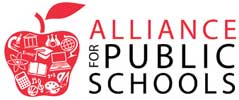The global pandemic had major impacts on education. A recent piece in EdWeek draws attention to one of the major factors affecting public schools since the pandemic- declining enrollment. The author notes that recent declines in test scores must be analyzed with an understanding of the shifting enrollment and population changes within districts.
Consider, for example, Los Angeles Unified, one of the nation’s largest school districts, which showed surprising gains on the recent federal tests relative to other large cities. The district was quick to credit the positive impact of their COVID-19 intervention strategies. Over the same three-year period, however, district enrollment fell nearly 10 percent. That dramatic enrollment decline, which varied by multiple student traits, confounds in an uncertain way any effort to view overall test-score changes as a reliable measure of the true changes in student learning.
Student enrollment was predicted to bounce back after pandemic restrictions and remote learning models were lifted.
Current enrollment data indicate that a broad return to public schools simply did not happen. Fall 2021 enrollment in K-12 grades actually fell nationally for a second year in a row, though by a more modest amount, roughly 130,000 students. A second year of declines in 1st grade enrollment indicates the children who avoided public kindergarten in the pandemic’s first year did not merely skip ahead to 1st grade. Additionally, though kindergarten enrollment bounced back somewhat, it was still far below its pre-pandemic levels, indicating substantial numbers of families didn’t redshirt their children.
Locally, Florida is experiencing stagnating enrollment or slight gains this school year. From Axios,
By the numbers: Miami-Dade counted 4,765 more students this year than last year, bringing its total enrollment to nearly 325,000 in its latest count (Sept. 1).
- Broward County experienced a 2% decrease, according to a preliminary count from the first day of school in August.
- Palm Beach County enrollment saw a slight increase of about 350 students (0.2%), according to its latest calculations released Aug. 31.
From the Tampa Bay Times,
Hillsborough is seeing the result of a slow but steady shift that began more than two decades ago in Florida, fueling education policy debates ever since. Charters, which are publicly funded but privately operated, have always been controversial.
A decade ago, about 6% of public school students in the county attended charters. The number has inched up each year and is now nearly 17%, or close to 37,000 students in 58 schools. Statewide, charters make up 13% of public school enrollment. In Pinellas County schools, it’s 7% and in Pasco County it’s 9%.
If charters continue to grow at the current rate in Hillsborough, they could make up 30% or 40% of the district’s enrollment in the next decade. A change of that magnitude can’t help but affect the district’s traditional schools. It already has.
Charter proponents say their schools provide competition, pushing regular public schools to improve. But when families leave traditional public schools to attend charters, state funding goes with them. This year, that adds up to more than $300 million in funds that no longer flow to the Hillsborough school system.
Alternative choices like charters and private schools or even homeschooling may not be the sole reason for declining public school enrollment as noted by the author.
Recent federal population estimates provide more definitive evidence the enrollment declines experienced by many public schools will endure. During the pandemic, overall population growth was the lowest ever recorded in U.S. history. And the population of school-age children in the United States, those 5- to 17-years-old, actually fell by over a quarter million. This overall decline means some of the enrollment loss during the pandemic simply reflects declining birth and immigration rates rather than an active choice not to attend public schools.
Taken together, these patterns imply state and local education leaders should plan immediately for the serious challenges (and potential opportunities) enduring enrollment losses imply for their COVID recovery efforts. The financial implications of enrollment loss have already begun to pressure districts to discuss school closures as well as teacher layoffs. Adapting to this new normal in a way that preserves community engagement and limits further learning disruptions to students will compound the already difficult task of addressing the pandemic’s direct impact on student learning and engagement.







